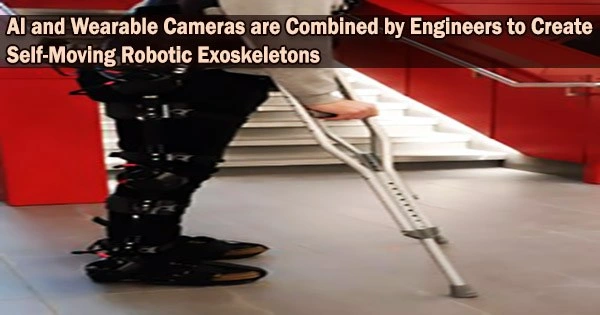Using cutting-edge artificial intelligence (AI) technology, robotics researchers are creating exoskeletons and prosthetic legs that are capable of reasoning and taking control of decisions on their own.
The technology uses deep learning AI and computer vision to simulate how people with physical limitations walk by observing their environment and modifying their gaits.
“We’re giving robotic exoskeletons vision so they can control themselves,” said Brokoslaw Laschowski, a Ph.D. candidate in systems design engineering who leads a University of Waterloo research project called ExoNet.
Exoskeletons with motorized legs already exist, but they must be manually controlled with joysticks or smartphone applications.
“That can be inconvenient and cognitively demanding,” said Laschowski, also a student member of the Waterloo Artificial Intelligence Institute (Waterloo.ai). “Every time you want to perform a new locomotor activity, you have to stop, take out your smartphone and select the desired mode.”
The researchers are currently refining AI computer software to process the video feed in order to precisely distinguish stairs, doors, and other elements of the surrounding area in order to remove that constraint by equipping exoskeleton users with wearable cameras.
The ExoNet research project’s next phase will involve transmitting commands to motors so that robotic exoskeletons can climb stairs, avoid obstructions, or carry out other suitable actions based on analysis of the user’s present movement and the approaching terrain.
“Our control approach wouldn’t necessarily require human thought,” said Laschowski, who is supervised by engineering professor John McPhee, the Canada Research Chair in Biomechatronic System Dynamics. “Similar to autonomous cars that drive themselves, we’re designing autonomous exoskeletons and prosthetic legs that walk for themselves.”
By leveraging human motion to self-charge the batteries, the researchers are also aiming to increase the energy efficiency of motors for robotic exoskeletons and prosthetics.





